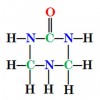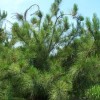 Supplying needed nutrients for crop production involves attention to four major fertilization factors (the 4Rs): right rate, right source, right placement, and right timing. Attention to these factors will provide adequate nutrition for crop production while minimizing the risk of loss of nutrients to the environment. In this publication each factor is described, as well as how the information can be provided from a soil test report. While not a formal part of the 4Rs, the importance of irrigation to overall nutrient management is stressed in this 4-page fact sheet written by George Hochmuth, Rao Mylavarapu, and Ed Hanlon, and published by the UF Department of Soil and Water Science, October 2014.
Supplying needed nutrients for crop production involves attention to four major fertilization factors (the 4Rs): right rate, right source, right placement, and right timing. Attention to these factors will provide adequate nutrition for crop production while minimizing the risk of loss of nutrients to the environment. In this publication each factor is described, as well as how the information can be provided from a soil test report. While not a formal part of the 4Rs, the importance of irrigation to overall nutrient management is stressed in this 4-page fact sheet written by George Hochmuth, Rao Mylavarapu, and Ed Hanlon, and published by the UF Department of Soil and Water Science, October 2014.
http://edis.ifas.ufl.edu/ss624
Tag: Fertilization and Nutrition
Fertilizer Recommendation Philosophies
 Farmers receive varying fertilizer recommendations depending on which lab they consult because labs employ different chemical methods and procedures to analyze the samples and subscribe to different fertilizer recommendation philosophies. This 4-page fact sheet explains the main soil-test philosophies, their basis, and their applications, and explains why the Sufficiency Level of Available Nutrient philosophy (SLAN), also called the Crop Nutrient Requirement (CNR), is most likely to be the best to govern fertilizer recommendations in Florida today. Written by George Hochmuth, Rao Mylavarapu, and Ed Hanlon, and published by the UF Department of Soil and Water Science, October 2014. (Photo by George Hochmuth, UF/IFAS)
Farmers receive varying fertilizer recommendations depending on which lab they consult because labs employ different chemical methods and procedures to analyze the samples and subscribe to different fertilizer recommendation philosophies. This 4-page fact sheet explains the main soil-test philosophies, their basis, and their applications, and explains why the Sufficiency Level of Available Nutrient philosophy (SLAN), also called the Crop Nutrient Requirement (CNR), is most likely to be the best to govern fertilizer recommendations in Florida today. Written by George Hochmuth, Rao Mylavarapu, and Ed Hanlon, and published by the UF Department of Soil and Water Science, October 2014. (Photo by George Hochmuth, UF/IFAS)
http://edis.ifas.ufl.edu/ss623
What is urea-triazone nitrogen?
 Foliar application of nitrogen and other nutrients essential for plant growth and development is an important practice for crop production. Most foliar nutrient N products contained the traditional N sources such as ammonium, nitrate and/or urea before urea-triazone N was available on the market. The traditional N sources have a greater salt index and leaf-burn potential than urea-triazone N. To avoid or minimize leaf burning, urea-triazone N fertilizers can be used instead of the traditional N sources. But growers have concerns about the safety of using triazone N fertilizers for commercial crop production because the fertilizers are still new to them. This 2-page fact sheet provides basic information on urea-triazone-based fertilizer for county faculty, crop consultants and advisors, growers, and students interested in commercial crop production. Written by Guodong Liu and Jeffrey Williamson, and published by the UF Department of Horticultural Sciences, October 2013.
Foliar application of nitrogen and other nutrients essential for plant growth and development is an important practice for crop production. Most foliar nutrient N products contained the traditional N sources such as ammonium, nitrate and/or urea before urea-triazone N was available on the market. The traditional N sources have a greater salt index and leaf-burn potential than urea-triazone N. To avoid or minimize leaf burning, urea-triazone N fertilizers can be used instead of the traditional N sources. But growers have concerns about the safety of using triazone N fertilizers for commercial crop production because the fertilizers are still new to them. This 2-page fact sheet provides basic information on urea-triazone-based fertilizer for county faculty, crop consultants and advisors, growers, and students interested in commercial crop production. Written by Guodong Liu and Jeffrey Williamson, and published by the UF Department of Horticultural Sciences, October 2013.
http://edis.ifas.ufl.edu/hs1233
Conversions of parts per million on soil test reports to pounds per acre
 Soil testing and the resulting fertilization recommendations are critical for appropriate nutrient management in commercial vegetable production, but growers and soil experts sometimes speak different languages. This 8-page fact sheet provides a simple conversion method for crop consultants, crop advisors, growers, students, and researchers who are interested in nutrient and water management of crop production. Written by Guodong Liu, Yuncong Li, and Aparna Gazula, and published by the UF Department of Horticultural Sciences, August 2013.
Soil testing and the resulting fertilization recommendations are critical for appropriate nutrient management in commercial vegetable production, but growers and soil experts sometimes speak different languages. This 8-page fact sheet provides a simple conversion method for crop consultants, crop advisors, growers, students, and researchers who are interested in nutrient and water management of crop production. Written by Guodong Liu, Yuncong Li, and Aparna Gazula, and published by the UF Department of Horticultural Sciences, August 2013.
http://edis.ifas.ufl.edu/hs1229
Understanding and Applying Chelated Fertilizers Effectively Based on Soil pH (HS1208)
 Plant nutrients are one of the environmental factors essential for crop growth and development. Nutrient management is crucial for optimal productivity in commercial crop production. Those nutrients in concentrations of ≤ 100 parts per million (ppm) in plant tissues are described as micronutrients and include iron (Fe), zinc (Zn), manganese (Mn), copper (Cu), boron (B), chlorine (Cl), molybdenum (Mo), and nickel (Ni). Micronutrients such as Fe, Mn, Zn, and Cu are easily oxidized or precipitated in soil, and their utilization is, therefore, not very efficient. Chelated fertilizers have been developed to increase micronutrient utilization efficiency. This 5-page fact sheet provides an overview of chelated fertilizers and considerations for their use to county Extension faculty, growers, and students who are interested in commercial crop production. Written by Guodong Liu, Edward Hanlon, and Yuncong Li, and published by the UF Department of Horticultural Sciences, November 2012.
Plant nutrients are one of the environmental factors essential for crop growth and development. Nutrient management is crucial for optimal productivity in commercial crop production. Those nutrients in concentrations of ≤ 100 parts per million (ppm) in plant tissues are described as micronutrients and include iron (Fe), zinc (Zn), manganese (Mn), copper (Cu), boron (B), chlorine (Cl), molybdenum (Mo), and nickel (Ni). Micronutrients such as Fe, Mn, Zn, and Cu are easily oxidized or precipitated in soil, and their utilization is, therefore, not very efficient. Chelated fertilizers have been developed to increase micronutrient utilization efficiency. This 5-page fact sheet provides an overview of chelated fertilizers and considerations for their use to county Extension faculty, growers, and students who are interested in commercial crop production. Written by Guodong Liu, Edward Hanlon, and Yuncong Li, and published by the UF Department of Horticultural Sciences, November 2012.
http://edis.ifas.ufl.edu/hs1208
Using Soils to Guide Fertilizer Recommendations for Southern Pines (CIR1230/FR053)
 Soils supporting southern pine stands in the South tend to be infertile and nutrient additions are often required to achieve optimum rates of production. This 12-page publication describes and classifies soils of the southeastern Coastal Plain region and specifically addresses issues of fertility, growth-limiting nutrients, and fertilizer recommendations for southern pines. Written by Eric J. Jokela and Alan J. Long, and published by the UF Department of School of Forest Resources and Conservation, June 2012.
Soils supporting southern pine stands in the South tend to be infertile and nutrient additions are often required to achieve optimum rates of production. This 12-page publication describes and classifies soils of the southeastern Coastal Plain region and specifically addresses issues of fertility, growth-limiting nutrients, and fertilizer recommendations for southern pines. Written by Eric J. Jokela and Alan J. Long, and published by the UF Department of School of Forest Resources and Conservation, June 2012.
http://edis.ifas.ufl.edu/fr053
Fertilizer Experimentation, Data Analyses, and Interpretation for Developing Fertilization Recommendations: Examples with Vegetable Crop Research (SL345/SS548)
 Fertilizer recommendations contain several important factors, including fertilizer form, source, application timing, placement, and irrigation management. Another important part of a fertilizer recommendation is the amount of a particular nutrient to apply. The optimum fertilizer amount is determined from extensive field experimentation conducted for several years, at multiple locations, with several varieties, etc. This 10-page fact sheet focuses on the research principles behind determining the optimum rate of fertilizer, including experimentation and interpreting research results for optimum crop production and quality in conjunction with minimal environmental consequences. Authors George Hochmuth, Ed Hanlon, and Allen Overman use examples from research with vegetable crops in Florida and emphasize that how one interprets the results is as important as how one conducts the research. Published by the UF Department of Soil and Water Science, October 2011.
Fertilizer recommendations contain several important factors, including fertilizer form, source, application timing, placement, and irrigation management. Another important part of a fertilizer recommendation is the amount of a particular nutrient to apply. The optimum fertilizer amount is determined from extensive field experimentation conducted for several years, at multiple locations, with several varieties, etc. This 10-page fact sheet focuses on the research principles behind determining the optimum rate of fertilizer, including experimentation and interpreting research results for optimum crop production and quality in conjunction with minimal environmental consequences. Authors George Hochmuth, Ed Hanlon, and Allen Overman use examples from research with vegetable crops in Florida and emphasize that how one interprets the results is as important as how one conducts the research. Published by the UF Department of Soil and Water Science, October 2011.
http://edis.ifas.ufl.edu/ss548
SL315/SS527 Principles of Sound Fertilizer Recommendations
SL315, an 8-page fact sheet by G. Hochmuth and E. Hanlon, describes components of science-based recommendations (best management practices) for fertilizer management in modern vegetable production. Includes references. Published by the UF Department of Soil and Water Sciences, February 2010.
http://edis.ifas.ufl.edu/ss527
SL-3/SS170 The Florida Fertilizer Label
Revised! SL-3, a 5-page fact sheet by J.B. Sartain, is included in the Florida Lawn Handbook and the Florida Master Gardener Handbook. It describes the information required by law to be shown on the fertilizer label in Florida. Published by the UF Department of Soil and Water Science, October 2008.
http://edis.ifas.ufl.edu/SS170
ENH1098/EP362 Nutrient Deficiency Symptoms of Woody Ornamental Plants in South Florida
ENH-1098, a 5-page illustrated fact sheet by Timothy K. Broschat, describes and illustrates typical symptoms for common nutrient deficiencies in trees and shrubs grown in south Florida landscapes. Published by the UF Department of Environmental Horticulture, March 2008.
http://edis.ifas.ufl.edu